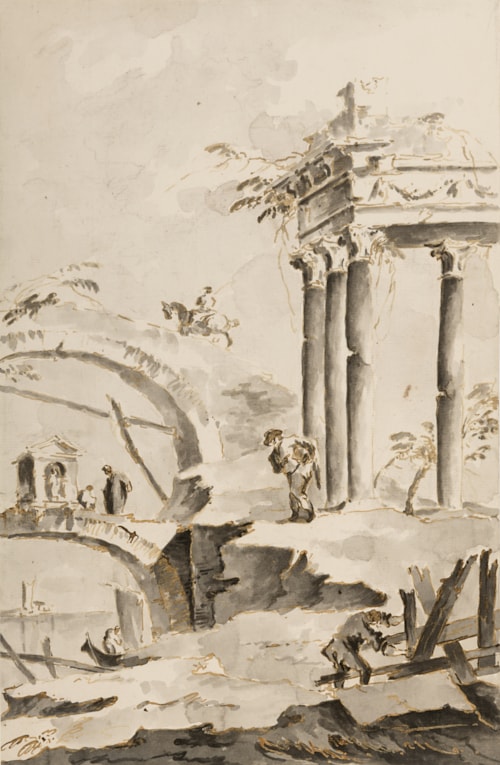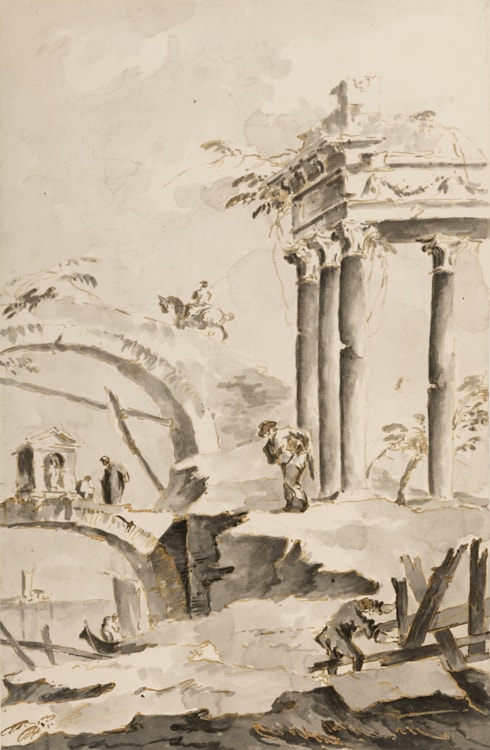
Giacomo GUARDI
Venice 1764 - Venice 1835
Biography
The youngest son of the view painter Francesco Guardi, Giacomo Guardi assisted his father in the latter part of the elder artist’s career, contributing to the Venetian vedute for which he was well known. As James Byam Shaw has pointed out, ‘Through his father’s elder sister Cecilia, the wife of Giovanni Battista Tiepolo, he was first cousin to Domenico Tiepolo, though thirty-seven years his junior, and like Domenico he was a devoted assistant to his father so long as Francesco lived.’1 Giacomo inherited Francesco Guardi’s studio after his death in 1793, and seems to have spent several years selling the remains of his father’s output to foreign collectors on the Grand Tour, and sometimes completing unfinished works. As another scholar has noted, Giacomo ‘continued his father’s activity well past the beginning of the new century, but without having either the elder’s instinctive poetic vein or his inimitable talent as a painter.’
By the turn of the century, Giacomo had developed a particular specialty of small-scale views of Venice, executed either in pen and grey wash or gouache, which were intended as souvenirs for sale to less affluent visitors to the city. These gouache drawings proved highly popular with foreign tourists, and several albums of these views made their way to England, Ireland and France in the early years of the 19th century. (After a visit to Venice in 1816, Lady Anne Elizabeth Cholmley Murray noted, in her A Journal of a Tour in Italy, published anonymously and privately in five volumes in 1836, that ‘Gardi [sic] the son of the painter of that name, does views in distemper in the same style.’) Frequently, though not invariably, inspired by his father’s compositions, these gouaches by Giacomo are generally signed and inscribed on the verso with the location depicted and, very often, the artist’s address in Venice (‘all’ Ospedaletto in Calle del Peruchier al no.5245’). It is interesting to note that in these works the artist often signed his name with the noble form ‘Giacomo de Guardi’, taking advantage of a patent of nobility granted to the Guardi family by the Holy Roman Emperor Ferdinand III several generations earlier, in 1643.
In 1829, towards the end of his career, Giacomo Guardi sold a large number of drawings by his father, as well as many of his own studies, to the collector Teodoro Correr; these are now in the Museo Correr in Venice.



